热门问题
时间线
聊天
视角
使用者:Dnssgh/test2
来自维基百科,自由的百科全书
Remove ads
ⓘ (日本 Nihon or Nippon?, officially 日本國 Nihon-koku or Nippon-koku) is an island nation in East Asia. Located in the Pacific Ocean, it lies to the east of China, Korea, and Russia, stretching from the Sea of Okhotsk in the north to the East China Sea in the south. The kanji characters that make up Japan's name mean "sun-origin", which is why Japan is sometimes identified as the "Land of the Rising Sun". Japan's capital and largest city is Tokyo.
Japan comprises over three thousand islands, the largest of which are Honshū, Hokkaidō, Kyūshū and Shikoku. Most of the islands are mountainous, many volcanic; for example, Japan’s highest peak, Mount Fuji, is a volcano. Japan has the world's tenth largest population, with about 128 million people. The Greater Tokyo Area, which includes Tokyo and several surrounding prefectures, is the largest metropolitan area in the world, with over 30 million residents.
Archaeological research indicates that people were living on the islands of Japan as early as the Upper Paleolithic period. The first written mention of Japan begins with brief appearances in Chinese history texts from the first century AD. Influence from the outside world followed by long periods of isolation has characterized Japan's history. Thus, its culture today is a mixture of outside influences and internal developments. Since adopting its constitution in 1947, Japan has maintained a unitary constitutional monarchy with an emperor and an elected parliament, the Diet.
A great power,[1] Japan is the world's second largest economy by nominal GDP and is a member of the United Nations, G8 and APEC.
Remove ads
History
The first signs of civilization on the Japanese Archipelago appeared around 10,000 BC with the Jomon culture, characterized by a Mesolithic to Neolithic semi-sedentary hunter-gatherer lifestyle of pit dwelling and a rudimentary form of agriculture. Decorated clay vessels from this period, often with plaited patterns, are some of the oldest surviving examples of pottery in the world.[2]
The Yayoi period, starting around the third century BC, introduced new practices, such as wet-rice farming, iron and bronze-making and a new style of pottery, brought by migrants from China or Korea. With the development of Yayoi culture, a predominantly agricultural society emerged in Japan.[3][4][5][6]
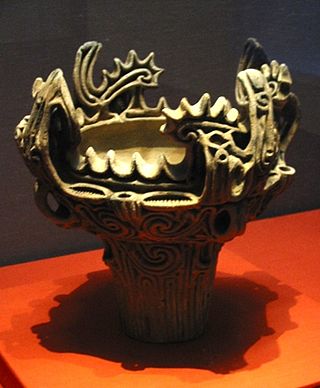

The Japanese first appear in written history in China’s Book of Han. According to the Chinese Records of the Three Kingdoms, the most powerful kingdom on the archipelago during the third century was called Yamataikoku.
In the sixth century, Mahayana Buddhism was introduced to Japan through the kingdoms of Korea.[7][8] Despite early resistance, Buddhism was promoted by the ruling class and eventually gained growing acceptance since the Asuka period.[9]
The Nara period of the eighth century marked the first emergence of a strong central Japanese state, centered around an imperial court in the city of Heijō-kyō, or modern day Nara. In addition to the continuing adoption of Chinese administrative practices, the Nara period is characterized by the appearance of a nascent written literature with the completion of the massive chronicles Kojiki (712) and Nihonshoki (720).[10]
In 784, Emperor Kammu moved the capital to Nagaokakyō for a brief ten-year period, before relocating it to Heian-kyō (modern day Kyoto) in 794, where it remained for more than a millennium.[11] This marked the beginning of the Heian period, during which time a distinctly indigenous Japanese culture emerged, noted for its art, poetry, and literature. Lady Murasaki's The Tale of Genji and the lyrics of modern Japan's national anthem, Kimi ga Yo were written during this time.[12]
Japan's feudal era was characterized by the emergence of a ruling class of warriors, the samurai. In 1185, following the defeat of the rival Taira clan, Minamoto no Yoritomo was appointed Shogun and established a base of power in Kamakura. After Yoritomo's death, the Hōjō clan came to rule as regents for the shoguns. Zen Buddhism was introduced from China in the Kamakura period (1185–1333) and became popular among the samurai class. The Kamakura shogunate managed to repel Mongol invasions in 1274 and 1281, aided by a storm that the Japanese interpreted as a kamikaze, or Divine Wind. The Kamakura shogunate was eventually overthrown by Emperor Go-Daigo, who was soon himself defeated by Ashikaga Takauji in 1336.[13] The succeeding Ashikaga shogunate failed to control the feudal warlords (daimyo), and a civil war erupted (the Ōnin War).[14]
During the sixteenth century, traders and missionaries from Portugal reached Japan for the first time, initiating the Nanban ("southern barbarian") period of active commercial and cultural exchange between Japan and the West.
Oda Nobunaga conquered numerous other daimyo by using European technology and firearms and had almost unified the nation when he was assassinated in 1582. Toyotomi Hideyoshi succeeded Nobunaga and united the nation in 1590. Hideyoshi invaded Korea twice, but following several defeats by Korean and Ming Chinese forces and Hideyoshi's death, Japanese troops were withdrawn in 1598.[15]

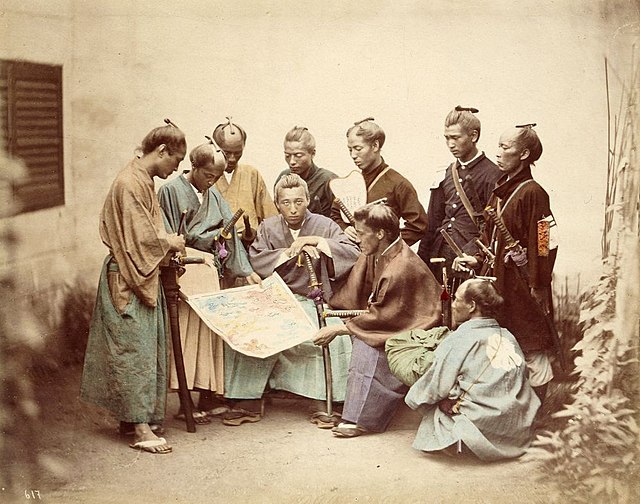
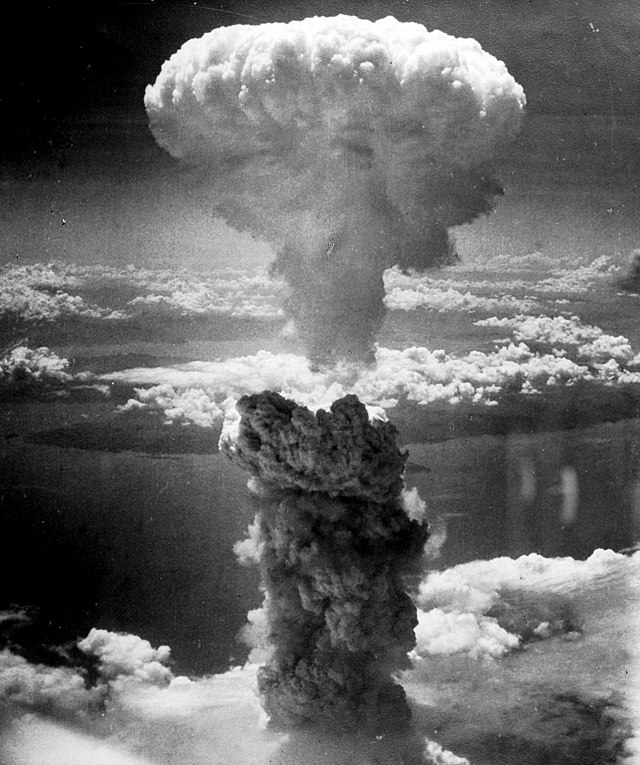
After Hideyoshi's death, Tokugawa Ieyasu utilized his position as regent for Hideyoshi's son Toyotomi Hideyori to gain political and military support. When open war broke out, he defeated rival clans in the Battle of Sekigahara in 1600. Ieyasu was appointed shōgun in 1603 and established the Tokugawa shogunate at Edo (modern Tokyo). The Tokugawa shogunate enacted a variety of measures to control the daimyo, among them the sankin-kotai policy. In 1639, the shogunate began the isolationist sakoku ("closed country") policy that spanned the two and a half centuries of tenuous political unity known as the Edo period. The study of Western sciences, known as rangaku, continued during this period through contacts with the Dutch enclave at Dejima in Nagasaki. The Edo period also gave rise to kokugaku, or literally "national studies", the study of Japan by the Japanese themselves.[16]
On March 31, 1854, Commodore Matthew Perry and the "Black Ships" of the United States Navy forced the opening of Japan to the outside world with the Convention of Kanagawa. The Boshin War of 1867–1868 led to the resignation of the shogunate, and the Meiji Restoration established a government centered around the emperor. Adopting Western political, judicial and military institutions, a parliamentary system modeled after the British parliament was introduced, with Ito Hirobumi as the first Prime Minister in 1882. Meiji era reforms transformed the Empire of Japan into an industrialized world power that embarked on a number of military conflicts to increase access to natural resources. After victories in the First Sino-Japanese War (1894–1895) and the Russo-Japanese War (1904–1905), Japan gained control of Korea, Taiwan and the southern half of Sakhalin.[17]
The early twentieth century saw a brief period of "Taisho democracy" overshadowed by the rise of Japanese expansionism and militarization. World War I enabled Japan, which joined the side of the victorious Allies, to expand its influence and territorial holdings. Japan continued its expansionist policy by occupying Manchuria in 1931. As a result of international condemnation for this occupation, Japan resigned from the League of Nations two years later. In 1936, Japan signed the Anti-Comintern Pact with Nazi Germany, joining the Axis Powers in 1941.[18]
In 1937, Japan invaded other parts of China, precipitating the Second Sino-Japanese War (1937–1945), after which the United States placed an oil embargo on Japan.[19] On December 7, 1941, Japan attacked the United States naval base in Pearl Harbor and declared war on the United States, the United Kingdom and the Netherlands. This act brought the United States into World War II. After the atomic bombings of Hiroshima and Nagasaki in 1945, along with the Soviet Union joining the war against it, Japan agreed to an unconditional surrender on August 15 (V-J Day).[20] The war cost Japan millions of lives and left much of the country's industry and infrastructure destroyed. The International Military Tribunal for the Far East, was convened by the Allies (on May 3, 1946) to prosecute Japanese leaders for war crimes such as the Nanjing Massacre.[21]
In 1947, Japan adopted a new pacifist constitution emphasizing liberal democratic practices. Official American occupation lasted until 1952[22] and Japan was granted membership in the United Nations in 1956. Under a subsequent program of aggressive industrial development aided by the US, Japan achieved spectacular growth to become the second largest economy in the world, with a growth rate averaging 10% for four decades. This ended in the mid-1990s when Japan suffered a major recession. Positive growth in the early twenty-first century has signalled a gradual recovery.[23]
Remove ads
Government and politics

Japan is a constitutional monarchy where the power of the Emperor (天皇 tennō, literally "heavenly sovereign") is very limited. As a ceremonial figurehead, he is defined by the constitution as "the symbol of the state and of the unity of the people". Power is held chiefly by the Prime Minister of Japan and other elected members of the Diet, while sovereignty is vested in the Japanese people.[24] The emperor effectively acts as the head of state on diplomatic occasions. Akihito is the current Emperor of Japan.
Japan's legislative organ is the National Diet, a bicameral parliament. The Diet consists of a House of Representatives, containing 480 seats, elected by popular vote every four years or when dissolved, and a House of Councillors of 242 seats, whose popularly-elected members serve six-year terms. There is universal suffrage for adults over 20 years of age,[25] with a secret ballot for all elective offices.[24] The liberal conservative Liberal Democratic Party (LDP) has been in power since 1955, except for a short-lived coalition government formed from opposition parties in 1993.[26] The largest opposition party is the social liberal Democratic Party of Japan.
The Prime Minister of Japan is the head of government. The literal translation of his Japanese title is "Prime Minister of the Cabinet". The position is appointed by the Emperor of Japan after being designated by the Diet from among its members, and must enjoy the confidence of the House of Representatives to remain in office. The Prime Minister is the head of the Cabinet and appoints and dismisses the Ministers of State, a majority of whom must be Diet members. Shinzo Abe currently serves as the Prime Minister of Japan.[27]
Historically influenced by Chinese law, the Japanese legal system developed independently during the Edo period through texts such as Kujikata Osadamegaki. However, since the late nineteenth century, the judicial system has been largely based on the civil law of Europe, notably France and Germany. For example, in 1896, the Japanese government established a civil code based on the French model. With post-World War II modifications, the code remains in effect in present-day Japan.[28] Statutory law originates in Japan's legislature, the National Diet of Japan, with the rubber-stamp approval of the Emperor. The current constitution requires that the Emperor promulgates legislation passed by the Diet, without specifically giving him the power to oppose the passing of the legislation.[24] Japan's court system is divided into four basic tiers: the Supreme Court and three levels of lower courts.[29] The main body of Japanese statutory law is a collection called the Six Codes.[28]
Remove ads
Foreign policy and military

Japan maintains close economic and military relations with its key ally the United States, with the US-Japan security alliance serving as the cornerstone of its foreign policy.[30] A member state of the United Nations since 1956, Japan is currently serving as a non-permanent Security Council member. It is also one of the G4 nations seeking permanent membership in the Security Council.[31]
As a member of the G8, the APEC, the "ASEAN Plus Three", and a participant in the East Asia Summit, Japan actively participates in international affairs. It is also the world's second-largest donor of official development assistance, donating 0.19% of its GNP in 2004.[32] Japan contributed non-combatant troops to the Iraq War, but subsequently withdrew its forces from Iraq.[33]
Japan has several territorial disputes with its neighbors: with Russia over the Kuril Islands, with South Korea over Takeshima, with China and Taiwan over the Senkaku Islands (Diaoyutai Islands), and with China over the status of Okinotorishima. These disputes are in part about the control of marine and natural resources, such as possible reserves of crude oil and natural gas.[34] The country also has an ongoing dispute with North Korea over its abduction of Japanese citizens and its nuclear weapons and missile programs.[35]
Japan's military is restricted by Article 9 of the Constitution of Japan, which renounces Japan's right to declare, or use military force in, war. Japan's military is governed by the Ministry of Defense, and primarily consists of the Japan Ground Self-Defense Force (JGSDF), the Japan Maritime Self-Defense Force (JMSDF), and the Japan Air Self-Defense Force (JASDF). The military budget of Japan is less than one percent of its GDP,[25] spending $44.3 billion per year, as of 2005.[36] The forces have been recently used in peacekeeping operations and the deployment of Japanese troops to Iraq marked the first overseas use of its military since World War II.[33]
Remove ads
Administrative divisions


While there exist eight commonly defined regions of Japan, administratively Japan consists of forty-seven prefectures, each overseen by an elected governor, legislature and administrative bureaucracy. The former city of Tokyo is further divided into twenty-three special wards, each with the same powers as cities.
The nation is currently undergoing administrative reorganization by merging many of the cities, towns, and villages with each other. This process will reduce the number of sub-prefecture administrative regions, and is expected to cut administrative costs.[37]
Japan has dozens of major cities, which play an important role in Japan's culture, heritage and economy. Those in the list below of the ten most populous are all prefectural capitals and Government Ordinance Cities, except where indicated:
a 23 municipalities. Also capital of Japan.
b Government Ordinance City only.
Remove ads
Geography and climate

Japan is a country of over three thousand islands extending along the Pacific coast of Asia. The main islands, running from north to south, are Hokkaidō, Honshū (the main island), Shikoku, and Kyūshū. The Ryukyu Islands, including Okinawa, are a chain of islands south of Kyushū. Together they are often known as the Japanese Archipelago.
About 70% to 80% of the country is forested, mountainous,[39][40] and unsuitable for agricultural, industrial, or residential use. This is due to the generally steep elevations, climate and risk of landslides caused by earthquakes, soft ground and heavy rain. This has resulted in an extremely high population density in the habitable zones that are mainly located in coastal areas. Japan is the thirtieth most densely populated country in the world.[41]
Its location on the Pacific Ring of Fire, at the juncture of three tectonic plates, gives Japan frequent low-intensity tremors and occasional volcanic activity. Destructive earthquakes, often resulting in tsunamis, occur several times each century.[42] The most recent major quakes are the 2004 Chūetsu Earthquake and the Great Hanshin Earthquake of 1995. Hot springs are numerous and have been developed as resorts.[43]
The climate of Japan is predominantly temperate, but varies greatly from north to south.[44] Japan's geographical features divide it into six principal climatic zones:
- Hokkaidō: The northernmost zone has a temperate climate with long, cold winters and cool summers. Precipitation is not heavy, but the islands usually develop deep snow banks in the winter.
- Sea of Japan: On Honshū's west coast, the northwest wind in the wintertime brings heavy snowfall. In the summer, the region is cooler than the Pacific area, though it sometimes experiences extremely hot temperatures, due to the Föhn wind phenomenon.
- Central Highland: A typical inland climate, with large temperature differences between summer and winter, and between day and night. Precipitation is light.
- Seto Inland Sea: The mountains of the Chūgoku and Shikoku regions shelter the region from the seasonal winds, bringing mild weather throughout the year.
- Pacific Ocean: The east coast experiences cold winters with little snowfall and hot, humid summers due to the southeast seasonal wind.
- South-west Islands: The Ryukyu Islands have a subtropical climate, with warm winters and hot summers. Precipitation is very heavy, especially during the rainy season. Typhoons are common.
The main rainy season begins in early May in Okinawa, and the stationary rain front responsible for this gradually works its way north until it dissipates in northern Japan before reaching Hokkaidō in late July. In most of Honshū, the rainy season begins before the middle of June and lasts about six weeks. In late summer and early autumn, typhoons often bring heavy rain.[44]
Japan is home to nine forest ecoregions which reflect the climate and geography of the islands. They range from subtropical moist broadleaf forests in the Ryūkyū and Bonin islands, to temperate broadleaf and mixed forests in the mild climate regions of the main islands, to temperate coniferous forests in the cold, winter portions of the northern islands.[45]
Remove ads
Economy
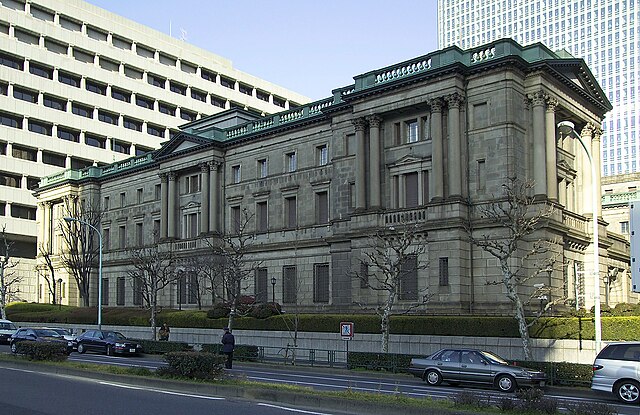
Close government-industry cooperation, a strong work ethic, mastery of high technology, and a comparatively small defense allocation have helped Japan become the second largest economy in the world,[46] after the United States, at around US$4.5 trillion in terms of nominal GDP[46] and third after the United States and China if purchasing power parity is used.[47]
Banking, insurance, real estate, retailing, transportation and telecommunications are all major industries. Japan has a large industrial capacity and is home to some of the largest and most technologically advanced producers of motor vehicles, electronic equipment, machine tools, steel and nonferrous metals, ships, chemicals, textiles and processed foods. It is home to leading multinational corporations and commercial brands in technology and machinery.[48] Construction has long been one of Japan's largest industries, with the help of multi-billion dollar government contracts in the civil sector. Distinguishing characteristics of the Japanese economy have included the cooperation of manufacturers, suppliers, distributors and banks in closely-knit groups called keiretsu and the guarantee of lifetime employment in big corporations.[49] Recently, Japanese companies have begun to abandon some of these norms in an attempt to increase profitability.[50]

Japan is home to the world's largest bank,[51] the Mitsubishi UFJ Financial Group,[52] which has roughly US$1.7 trillion in assets;[51] the world's largest postal savings system; and the largest holder of personal savings, Japan Post, holding personal savings valued at around US$3.3 trillion. It is home to the world's second largest stock exchange, the Tokyo Stock Exchange, with a market capitalization of over US$4 trillion as of December 2006.[53] It is also home to some of the largest financial services companies, business groups and banks. For instance several large keiretsus (business groups) and multinational companies such as Sony, Sumitomo, Mitsubishi and Toyota own billion- and trillion-dollar operating banks, investment groups and/or financial services such as Sumitomo Bank, Fuji Bank, Mitsubishi Bank, Toyota Financial Services and Sony Financial Holdings.
From the 1960s to the 1980s, overall real economic growth has been called a "miracle": a 10% average in the 1960s, a 5% average in the 1970s and a 4% average in the 1980s.[54] Growth slowed markedly in the 1990s, largely due to the after-effects of over-investment during the late 1980s and domestic policies intended to wring speculative excesses from the stock and real estate markets. Government efforts to revive economic growth met with little success and were further hampered in 2000 to 2001 by the deceleration of the global economy.[48] However, the economy showed strong signs of recovery after 2005. GDP growth for that year was 2.8%, with an annualized fourth quarter expansion of 5.5%, surpassing the growth rates of the US and European Union during the same period.[55]
Because only about 15% of Japan's land is suitable for cultivation,[56] a system of terrace farming is used to build in small areas. This results in one of the world's highest levels of crop yields per unit area. However, Japan's small agricultural sector is also highly subsidized and protected. Japan must import about 50%[57] of its requirements of grain and fodder crops other than rice, and it relies on imports for most of its supply of meat. In fishing, Japan is ranked second in the world behind China in tonnage of fish caught. Japan maintains one of the world's largest fishing fleets and accounts for nearly 15% of the global catch.[48] Japan relies on foreign countries for almost all oil and food.[58]
Transportation in Japan is highly developed. As of 2004, there are 1,177,278 km of paved roadways, 173 airports, and 23,577 km of railways.[48] Air transport is mostly operated by All Nippon Airways (ANA) and Japan Airlines (JAL). Railways are operated by Japan Railways among others. There are extensive international flights from many cities and countries to and from Japan.
Japan's main export partners are the United States 22.9%, China 13.4%, South Korea 7.8%, Taiwan 7.3% and Hong Kong 6.1% (for 2005). Japan's main exports are transport equipment, motor vehicles, electronics, electrical machinery and chemicals.[48] With very limited natural resources to sustain economic development, Japan depends on other nations for most of its raw materials; thus it imports a wide variety of goods. Its main import partners are China 21%, U.S. 12.7%, Saudi Arabia 5.5%, UAE 4.9%, Australia 4.7%, South Korea 4.7% and Indonesia 4% (for 2005). Japan's main imports are machinery and equipment, fossil fuels, foodstuffs (in particular beef), chemicals, textiles and raw materials for its industries. Overall, Japan's largest trading partner is China.[59]
Remove ads
Science and technology
Japan is a leading nation in the fields of scientific research, technology, machinery and medical research. Nearly 700,000 researchers share a US$130 billion research and development budget, the third largest in the world.[60]
Some of Japan's more important technological contributions are found in the fields of electronics, machinery, industrial robotics, optics, chemicals, semiconductors and metals. Japan leads the world in robotics, possessing more than half (402,200 of 742,500) of the world's industrial robots used for manufacturing.[61] It also produced QRIO, ASIMO, and Aibo. Japan is also home to six of the world's fifteen largest automobile manufacturers and seven of the world's twenty largest semiconductor sales leaders.
Japan has significant plans in space exploration, including building a moonbase by 2030.[62] The Japan Aerospace Exploration Agency (JAXA) conducts space and planetary research, aviation research, and development of rockets and satellites. It also built the Japanese Experiment Module, which is slated to be launched and added to the International Space Station during Space Shuttle assembly flights in 2007 and 2008.[63]
Remove ads
Demographics
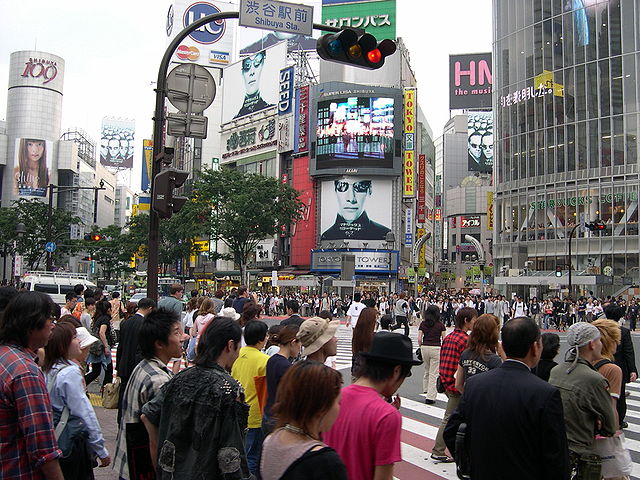
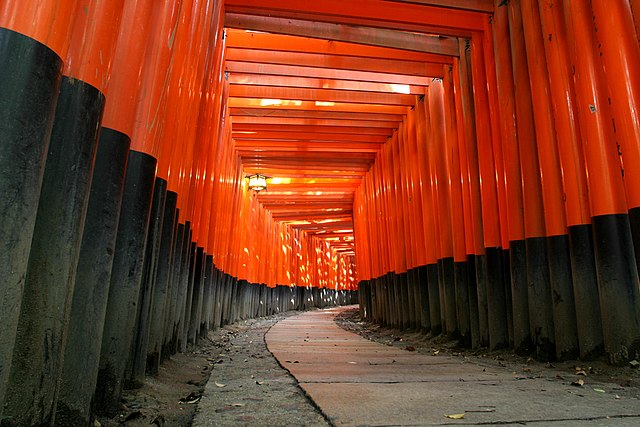
Japan's population is estimated at around 127,463,611.[64] For the most part, Japanese society is linguistically and culturally homogeneous with only small populations of foreign workers, Zainichi Koreans, Japanese Brazilians, and others. Japan also has indigenous minority groups such as the Ainu and Ryūkyūans, and social minority groups such as the burakumin.
Japan has one of the highest life expectancy rates in the world, at 81.25 years of age as of 2006.[65] However, the Japanese population is rapidly aging, the effect of a post-war baby boom followed by a decrease in births in the latter part of the twentieth century. In 2004, about 19.5% of the population was over the age of 65.[66]
The changes in the demographic structure have created a number of social issues, particularly a potential decline in the workforce population and increases in the cost of social security benefits such as the public pension plan. It is also noted that many Japanese youth are increasingly preferring not to marry or have families as adults.[67] Japan's population is expected to drop to 100 million by 2050 and to 64 million by 2100.[66] Demographers and government planners are currently in a heated debate over how to cope with this problem.[67] Immigration and birth incentives are sometimes suggested as a solution to provide younger workers to support the nation's aging population.[68] Immigration, however, is not popular.[69]
Around 84% of Japanese people profess to believe both Shinto (the indigenous religion of Japan) and Buddhism.[64] Buddhism, Taoism and Confucianism from China have significantly influenced Japanese beliefs and mythology. Religion in Japan tends to be syncretic in nature, and this results in a variety of practices, such as parents and children celebrating Shinto rituals, students praying before exams, couples holding a wedding at a Christian church and funerals being held at Buddhist temples. A minority (0.7%) profess to Christianity.[64] In addition, since the mid-19th century, numerous religious sects (Shinshūkyō) have emerged in Japan.
About 99% of the population speaks Japanese as their first language.引用錯誤:沒有找到與<ref>對應的</ref>標籤 The Ainu language is moribund, with only a few elderly native speakers remaining in Hokkaidō.[70] Most public and private schools require students to take courses in both Japanese and English.[71]
Remove ads
Education and health
Primary, secondary schools and universities were introduced into Japan in 1872 as a result of the Meiji Restoration.[72] Since 1947, compulsory education in Japan consists of elementary school and middle school, which lasts for nine years (from age 6 to age 15). Almost all children continue their education at a three-year senior high school, and, according to the MEXT, about 75.9% of high school graduates attend a university, junior college, trade school, or other post-secondary institution in 2005.[73] Japan's education is very competitive,[74] especially for entrance to institutions of higher education. According to The Times Higher Education Supplement the two top-ranking universities in Japan are the University of Tokyo and the Kyoto University.[75]
In Japan, healthcare services are provided by national and local governments. Payment for personal medical services is offered through a universal health care insurance system that provides relative equality of access, with fees set by a government committee. People without insurance through employers can participate in a national health insurance program administered by local governments. Since 1973, all elderly persons have been covered by government-sponsored insurance.[76] Patients are free to select physicians or facilities of their choice.[77]
Culture

Japanese culture has evolved greatly over the years, from the country's original Jomon culture to its contemporary hybrid culture, which combines influences from Asia, Europe and North America. Traditional Japanese arts include crafts (ikebana, origami, ukiyo-e, dolls, lacquerware, pottery), performances (bunraku, dance, kabuki, noh, rakugo), traditions (games, tea ceremony, budō, architecture, gardens, swords) and cuisine. The fusion of traditional woodblock printing and Western art led to the creation of manga, a typically Japanese comic book format that is now popular within and outside Japan.[78] Manga-influenced animation for television and film is called anime. Japanese-made video game consoles have prospered since the 1980s.[79]
Japanese music is eclectic, having borrowed instruments, scales, and styles from neighboring cultures. Many instruments, such as the koto, were introduced in the ninth and tenth centuries. The accompanied recitative of the Noh drama dates from the fourteenth century and the popular folk music, with the guitar-like shamisen, from the sixteenth.[80] Western music, introduced in the late nineteenth century, now forms an integral part of the culture. Post-war Japan has been heavily influenced by American and European modern music, which has led to the evolution of popular band music called J-Pop.[81]
The earliest works of Japanese literature include two history books the Kojiki and the Nihon Shoki, and the eighth century poetry book Man'yōshū, all written in Chinese characters.[82] In the early days of the Heian period, the system of transcription known as kana (Hiragana and Katakana) was created as phonograms. The Tale of the Bamboo Cutter is considered the oldest Japanese narrative.[83] An account of Heian court life is given by The Pillow Book written by Sei Shōnagon, while The Tale of Genji by Lady Murasaki is often described as the world's first novel. During the Edo Period, literature became not so much the field of the samurai aristocracy as that of the chōnin, the ordinary people. Yomihon, for example, became popular and reveals this profound change in the readership and authorship.[83] The Meiji era saw the decline of traditional literary forms, during which Japanese literature integrated Western influences. Natsume Soseki and Mori Ogai were the first "modern" novelists of Japan, followed by Akutagawa Ryunosuke, Tanizaki Junichiro, Kawabata Yasunari, Mishima Yukio and, more recently, Murakami Haruki. Japan has two Nobel Prize-winning authors — Kawabata Yasunari (1968) and Oe Kenzaburo (1994).[83]
Remove ads
Sports and recreation
Traditionally, sumo is considered Japan's national sport and is one of its most popular.[84] Martial arts such as judo, karate and kendō are also widely practiced in the country. After the Meiji Restoration, many Western sports were introduced in Japan and began to spread through the education system.[85]
Baseball is the most popular spectator sport in Japan and the professional baseball league in Japan was established in 1936.[86] One of the most famous Japanese baseball players is Ichiro Suzuki, who, having won Japan's Most Valuable Player award in 1994, 1995 and 1996, now plays in North American major league baseball. Since the establishment of a professional soccer league in Japan in 1992, football has also gained a wide following.[87] Japan was a venue of the Intercontinental Cup from 1981 to 2004 and co-hosted the 2002 FIFA World Cup with South Korea.
Golf is popular in Japan,[88] as is auto racing, the Super GT sports car series and Formula Nippon formula racing.[89]
Every year, Japan observes the second Monday in October as Health and Sports Day.[90] The date, originally October 10, commemorates the opening day of the 1964 Summer Olympics in Tokyo. Other major sporting events that Japan has hosted include the 1972 Winter Olympics in Sapporo and the 1998 Winter Olympics in Nagano.
Remove ads
See also
References
External links
Further reading
概要
國名
首都
歴史
民族
地理
地域・広域行政區畫
主要都市
人口
動植物
政治
外交
領土問題
法律
安全保障
福祉
経済・産業
言語
宗教
教育
文化・民俗
食生活
放送
その他
注釈
関連項目
外部リンク
Wikiwand - on
Seamless Wikipedia browsing. On steroids.
Remove ads